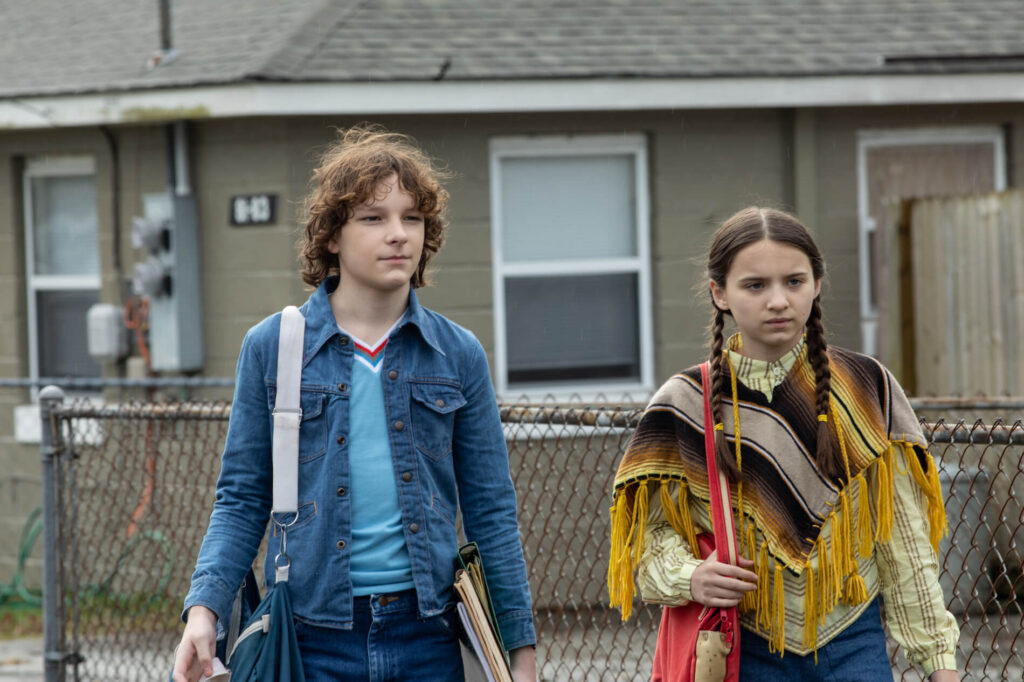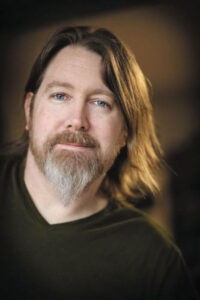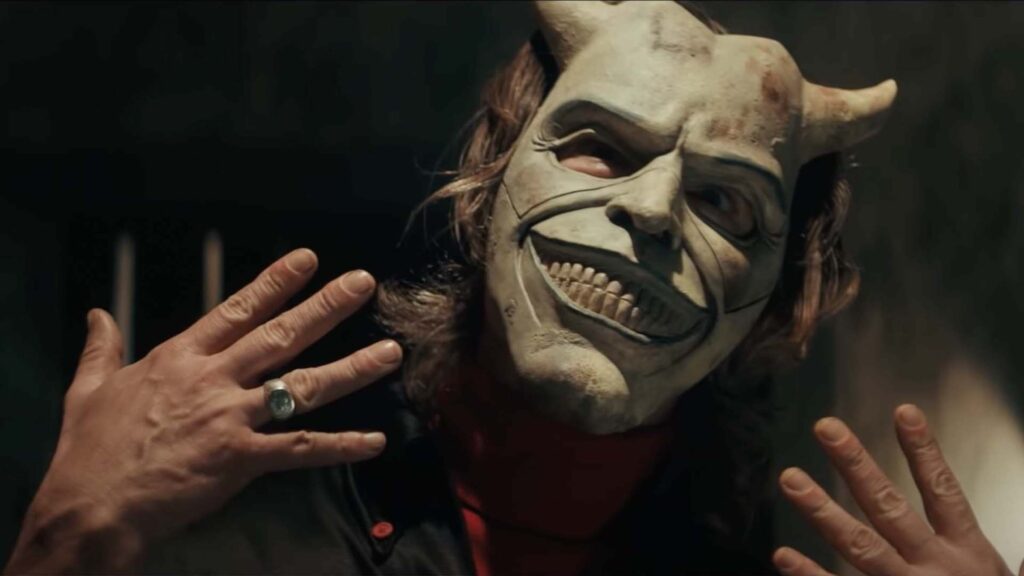For horror master C. Robert Cargill and horror writer Chris Hicks, the genre is only the writer’s imagination. Cargill, who started as a film critic known under the pseudonyms Massawyrm on Ain’t It Cool News and Carlyle on Spill.com, is a screenwriter and novelist who is best known for writing Sinister, Doctor Strange, and The Black Phone with his writing partner Scott Derrickson.
Hicks, who found notoriety on the subreddit r/NoSleep, broke into the film industry through his terrifying short stories like “My Sleep Paralysis Demon is Actually A Pretty Chill Guy,” which was voted Scariest Story of the Year.
While Cargill and Hicks had very different ways into the industry, they sat down to talk about the recent value of short stories in Hollywood and take advantage of the recent spike in interest in the new era of horror stories. Even if you’re not a genre writer, these five takeaways from their conversation could improve your screenwriting career in Hollywood.
Using the Backdoor to Enter the Industry
Cargill and Hicks both found nontraditional ways to break into the film industry as screenwriters. Both writers focused on projects outside of screenwriting. Hicks found great popularity with his short stories on r/NoSleep, while Cargill made a name for himself as a film reviewer and critic.
While both writers are now in the industry thanks to connections they made during their respective writing careers (Hicks through Coverfly’s Mentorship Program and Cargill through a meeting with his fan and friend Scott Derrickson), they still understand the value of writing a short story in the modern era of filmmaking.

A person typing on a laptop
“I get an idea in my head, [and] I figure out where that idea belongs … Is this a short story? Is this a novella or a novel? Or is this a screenplay? What’s the length of it? What does it want to do? How weird is it? How saleable is it? There are so many questions you ask yourself,” Cargill says.
With a short story, writers are in and out of a particular moment. However, a feature means you’re in it for the long haul. Each story is different. Some stories don’t always work from the screen. But how do writers know what medium a story should be? For the horror masters, the answer is simple.
Read More: 5 Reasons You Should Write a Short Story
Deciding Which Idea Is for a Short Story or a Feature
While Hicks goes the more traditional route of screenwriting and outlines his feature films, Cargill says he can’t write anything that he doesn’t know the ending to (except a short story).
“I feel that if you do too much outlining in advance it feels like a slog because you’ve done the fun stuff already,” Cargill says. “So I like to map out mentally the beats that I’m going to hit and then find the magic and enjoyment as I go.”
The rough outline Cargill keeps the magic in the writing. “I don’t like giving up all the magic, you know? And that’s one of the big things we struggle with, is there’s the magic of discovery when you find a scene when you find the magic of these characters interacting,” he says.

Hicks, who is still finding his tried-and-true process, still finds himself gravitating toward short stories. “There are some limits to what you can do with a screenplay,” Hicks says. “I wrote an adaptation of one of my short stories about a guy who picks up a ghost hitchhiker … [and] turned the short script into a feature script, and I’m reading the story and was like, ‘This takes place in a car the whole time. I don’t know if this is a movie.’’
However, Hicks is starting to find what stories work as a feature. Finding the big moments, the trailer moments and the set pieces that are going to make people excited to see the film are aspects he keeps in mind when choosing whether or not to spend time writing the feature script.
Chris Hicks Proves Intellectual Property Is Still King
It is unlikely that Hollywood will stop gravitating toward Intellectual property (IP) anytime soon. Anything a writer creates is unique is IP (unless it is a work product for an employer or stated in a signed agreement).

Chris Hicks
After writing his 20-page short story, I Am Not Alone, Netflix won a million-dollar bid to secure the story and adapt it into a film staring Jessica Chastain. This short story is well developed, easy to read, and pitches a concept with meat on the bones when compared to a logline.
Hicks and Cargill emphasized that the sale of short stories is nothing new but is happening more frequently. “There really is a conventional way into this, I don’t think. Everybody kind of finds their own way because that’s just how it goes. There’s no way through it,” Hicks says.
Sometimes, IP is difficult to adapt. It took Cargill and Derrickson ten years to find the human elements in The Black Phone short story to expand it into a feature screenplay that people could relate to and find entertaining.
Read More: The Screenwriting Dos and Don’ts of Intellectual Property
Make Your Protagonist Either Interesting or Likable
Whether writing a short story or a feature film, the protagonist is the glue that holds the story together. In horror writing, this is even more vital as the writer’s intentions with the protagonist will influence the audience’s reaction to the horrors that happen to them.

C. Robert Cargill
“In any film, you want the main character to be either likable or interesting. It doesn’t have to be both … When it comes to horror, if you hate the character, the horror will be experienced by the audience as catharsis, right? They will be watching a terrible person suffer, and they will love that. If we like a character, if we love them, we will be terrified for them,” Cargill notes.
Hicks expands on this idea, recalling the ideal horror films of the Horror Renaissance (1968-1982). Horror, at that time, was about punishing and rewarding those based on an American morality scale. What magic unfolds when characters steps out of their trope?
“When you get past that, then what are the unique ways we can keep killing people? And that’s where the fun was,” Hicks says. Memorable kills and exciting twists are why so many people come back and enjoy horror films, and what makes writing a horror story an exciting task to take on.
Taking Advantage of Modern Horror
Fans, actors, and studios want a “scary face movie,” as Cargill puts it. “It’s been very interesting watching not only the studios but actors take [horror] seriously. … A lot of veteran actors love horror and don’t really get to indulge in it. When they do, they’re very picky. They want to make really good stuff, and then they bring it,” he says.
Cargill and his writing partner believe that writing an interesting human story first and then adding the horror elements second will create a movie that people will care about. For Hicks, an engaging story is one that disarms the audience through humor.
“[T]there’s always some sort of comedic thing that happens that is kind of a pallet cleanser and gives the audience a chance to kind of disarm them so that when the scares happen again, it’s like, oh, you’re not constantly kept in a state of fright,” Hicks says. Cargill agrees, saying that resetting the audience so they feel safe makes the build-up of tension even more frightening.

‘The Black Phone’
—
Screenwriters are not limited to writing screenplays. Being a writer means expanding and challenging yourself to craft a story that is engaging to you, then building to make it a story that is ready to share with the world. Hollywood is changing, and short stories are valuable once again.
Not every story is a feature film, but that doesn’t mean the idea brewing in the back of your mind shouldn’t exist on the page. Write everything down, and play with that idea in the medium you think it should exist in. You never know who could be reading your story.
Read More: 13 Classic Movies Based on Short Stories: Best Short Story Adaptations
CHECK OUT OUR PREPARATION NOTES SO YOU START YOUR STORY OFF ON THE RIGHT TRACK!
The post 5 Takeaways from a Conversation with Horror Master C. Robert Cargill appeared first on ScreenCraft.
Go to Source
Author: Alyssa Miller


